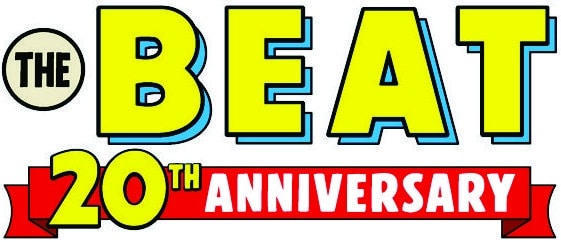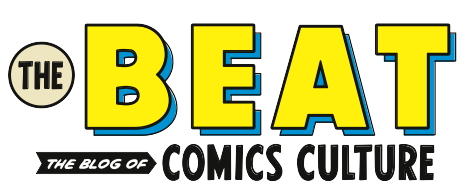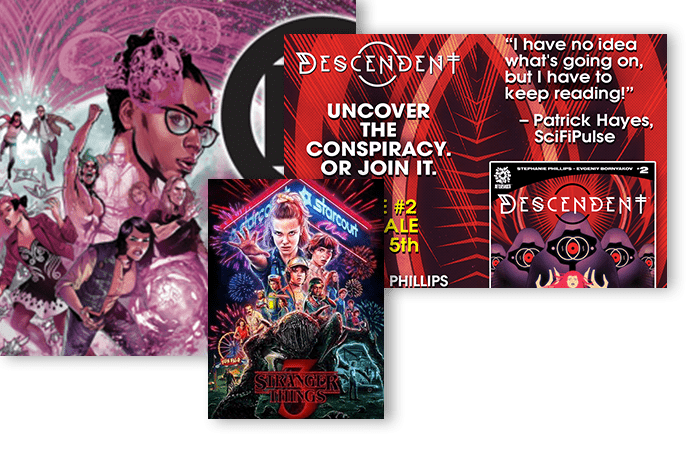All ten episodes of Jurassic World: Chaos Theory Season 3 have landed on Netflix, and they are truly out of this world.
Chaos Theory begins six years after the events at Camp Cretaceous. Exploring what the Jurassic World films haven’t had space for (aka the impact of dinosaurs being set loose on the mainland), it follows the members of “The Nublar Six,” who struggle to find their footing off the islands and navigate a world filled with dinosaurs and people who want to hurt them.
Reunited in the wake of a tragedy, five members of the group come together only to find themselves on the run and catapulted into a global adventure to unravel a conspiracy that threatens dinosaur and humankind alike. In Season 3, we see the remaining members of the group, now known as “The Nublar Five,” crash land into a new adventure as they encounter old (and new) friends, face off against even more lethal dinosaur threats, and deal with the fallout of Brooklynn’s stunning rejection of them. All the while, Brooklynn’s inner turmoil continues to grow as she is drawn deeper into the Broker’s criminal web of dinosaur trafficking and espionage.
The Beat caught up with Chaos Theory‘s executive producer and showrunner, Scott Kreamer, to discuss all things Season 3. We chatted about the introduction of the franchise’s own version of Baby Yoda, dinosaur design, why disability representation onscreen matters, and so much more!
Beware of spoilers for Season 3! The interview has been edited for length and clarity.
OLLIE KAPLAN: [Begins the interview by holding up their anxiety stuffed animal, Bumpy, a weighted version of the Ankylosaurus introduced in Jurassic World: Camp Cretaceous.]
SCOTT KREAMER: Hi, Bumpy. I have the Allosaurus with me, so I’m very proud.
KAPLAN: Oh, I love the eye.
KREAMER: Yeah, isn’t that cool? They made this prototype, and I kept saying, “But the eye?” When they did the eye, I reacted so much that they said, “You could keep that.”
KAPLAN: Yeah, it’s amazing.
KREAMER: Yeah. Isn’t that cool?
KAPLAN: When I bring Bumpy around, she’s always a hit.
KREAMER: That’s awesome.
KAPLAN: First, Smoothie. He’s like a kitten. So, how do you approach the character design?
KREAMER: With Smoothie, I think our art director, JP Balmet, and designer Chris Sears, basically started with baby Bumpy and decided to make Smoothie about a hundred times cuter. I’m excited for the world to finally see Smoothie because he is as cute as they come. And then you throw in some yarn cat ears, and you know, what else do you want? Just all the way around: the animation, the vocals… I’m a big, big Smoothie fan, and I’m looking forward to everyone else seeing it.
KAPLAN: He’s like the Baby Yoda of Jurassic World.
KREAMER: Exactly.
KAPLAN: Because Bumpy was already cute enough.
KREAMER: Exactly. Smoothie is cute, with a personality plus. So looking forward to that.
KAPLAN: I was excited to see the ties to Jurassic World: Dominion. Can you tell me more about your decision to intertwine this season of Chaos Theory with the sixth movie?
KREAMER: We always knew we were headed in this direction. It was baked into the original concept, and then, we started building it and brought Soyona Santos (Dichen Lachman) in Season 2. Luckily, Colin Trevorrow, the writer and director of Dominion, was always in our writers’ room as we were breaking the season, and then we would check in with him along the way. He was all for it and was able to give us a little insight and a few details.
Trevorrow, Frank Marshall, and Universal pretty much let us do what we wanted to as we started building out the world and the details in the margins of the film’s story, and you know, that’s always a fun challenge to undertake.
KAPLAN: It’s exciting to see so many dinosaurs from the movie. When you approached the dinosaur design for Chaos Theory, did you base your designs on concept art from the film?
KREAMER: Regarding the dinosaurs’ look, the CG files they used to make the movies are humongous. So, our design team gets all the references for the dinosaurs, and then we have to simplify a little bit. I love how our dinosaurs look; they hold up pretty well, but we can’t do everything they do in the features.
We’ve never been able to pull off a feathered dinosaur before, so we wanted to do it. We were excited about that challenge with the pyroraptor, and it came out so much more detailed than we could have hoped. The designers do their own take on it, but you know, we’re trying to match the movies as much as our technology will allow us.
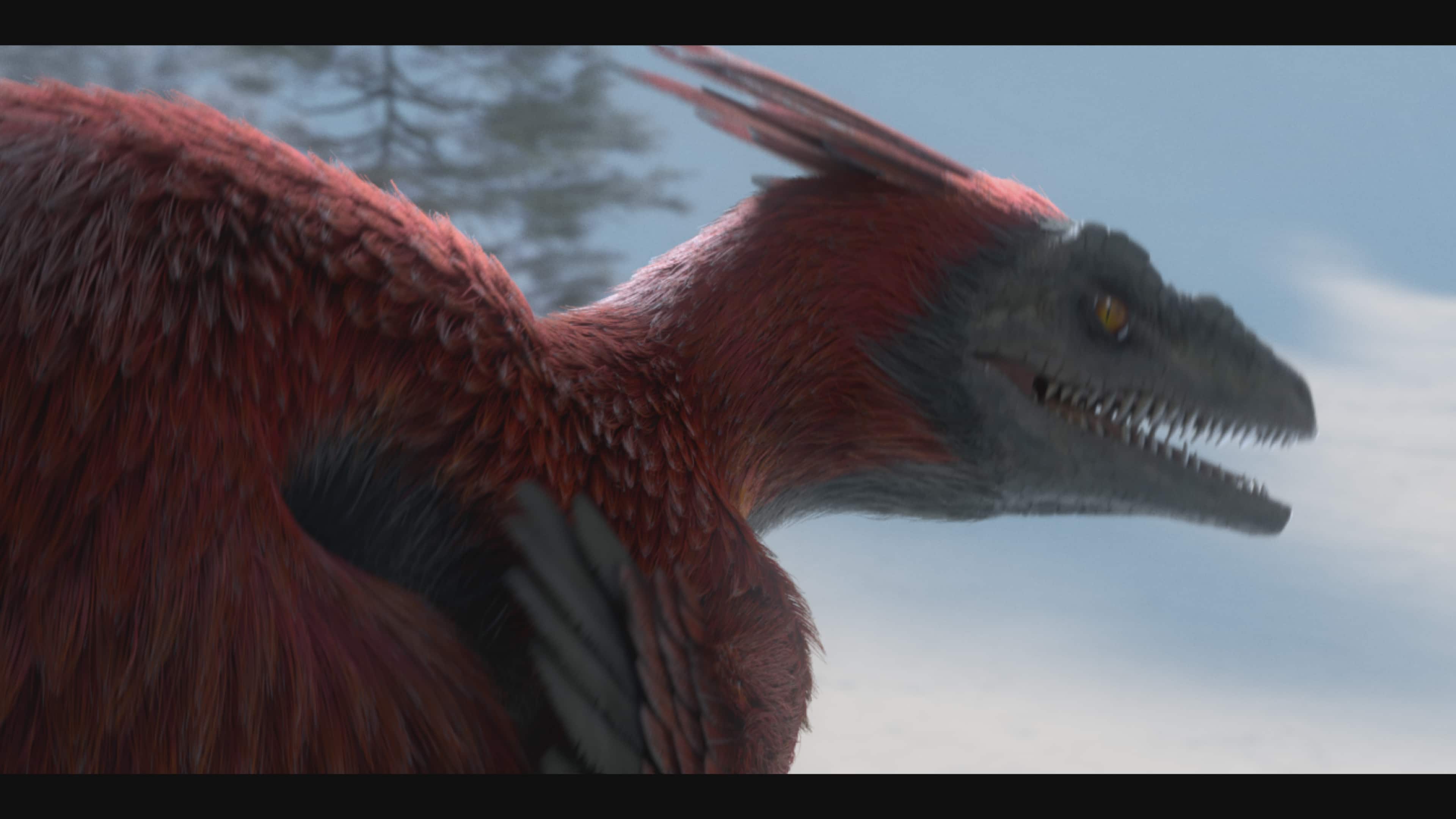
KAPLAN: The pyroraptor was great. I loved the jump scene, which was almost exactly like the sixth film.
KREAMER: You know, we just see the pyroraptor briefly in that ice lake in Dominion, and we were just like, “Well, how did it get there? It’s not really in the sanctuary itself or the forest.” So it’s just sort of what this job is: letting your imagination run wild.
KAPLAN: RIP, Ghost. That made me very sad. Do the designers have names for the other dinosaurs, in addition to the dinosaurs with on-screen names?
KREAMER: That was hard. It was similar to when Tiff shot Grim, the Baryonyx, in Camp Cretaceous; it was like that dinosaur was a villain, but you feel for it.
KAPLAN: Pour one out for Ghost. Do all the dinosaurs have names, like for production design purposes?
KREAMER: You mean, like Ghost or Red or something like that? We call out some of them in the script, and sometimes they’re just placeholder names so the board artists can keep track of them. You know, our Majungasaurus, we named Major, our Becklespinaxes, I believe, were just called Blonde and Brunette Becky, back in Season 1. So yes, some of them do. I don’t think we ever named the Allosaurus, so it’s on a case-by-case basis. But usually when we do it in scripts, it’s more so that everyone, whether it’s the production team calling out what dinosaur goes where, or just trying to keep things straight. Then, we let Mattel and the Universal franchise people worry about what they will put on a box.
KAPLAN: Makes sense. Since you said you had an open range, how did you decide which film characters to include?
KREAMER: I mean, I wouldn’t say we had full open range, but we always loved the character of Barry (Omar Sy) and the fact that he was at Jurassic World basically when our kids were there. That was a fun time for us. Honestly, I would have loved to use even more. I’m a big DeWanda Wise fan, and you know, Kayla’s a great character, as are so many others. But, we have limitations on how many characters we can make; that’s just the sad truth. So we had to pick and choose, and Barry felt like a great choice. Given their interaction in Dominion, we also knew we wanted to bring Dr. Lewis Dodgson (Campbell Scott) back, who we also used in Camp Cretaceous.
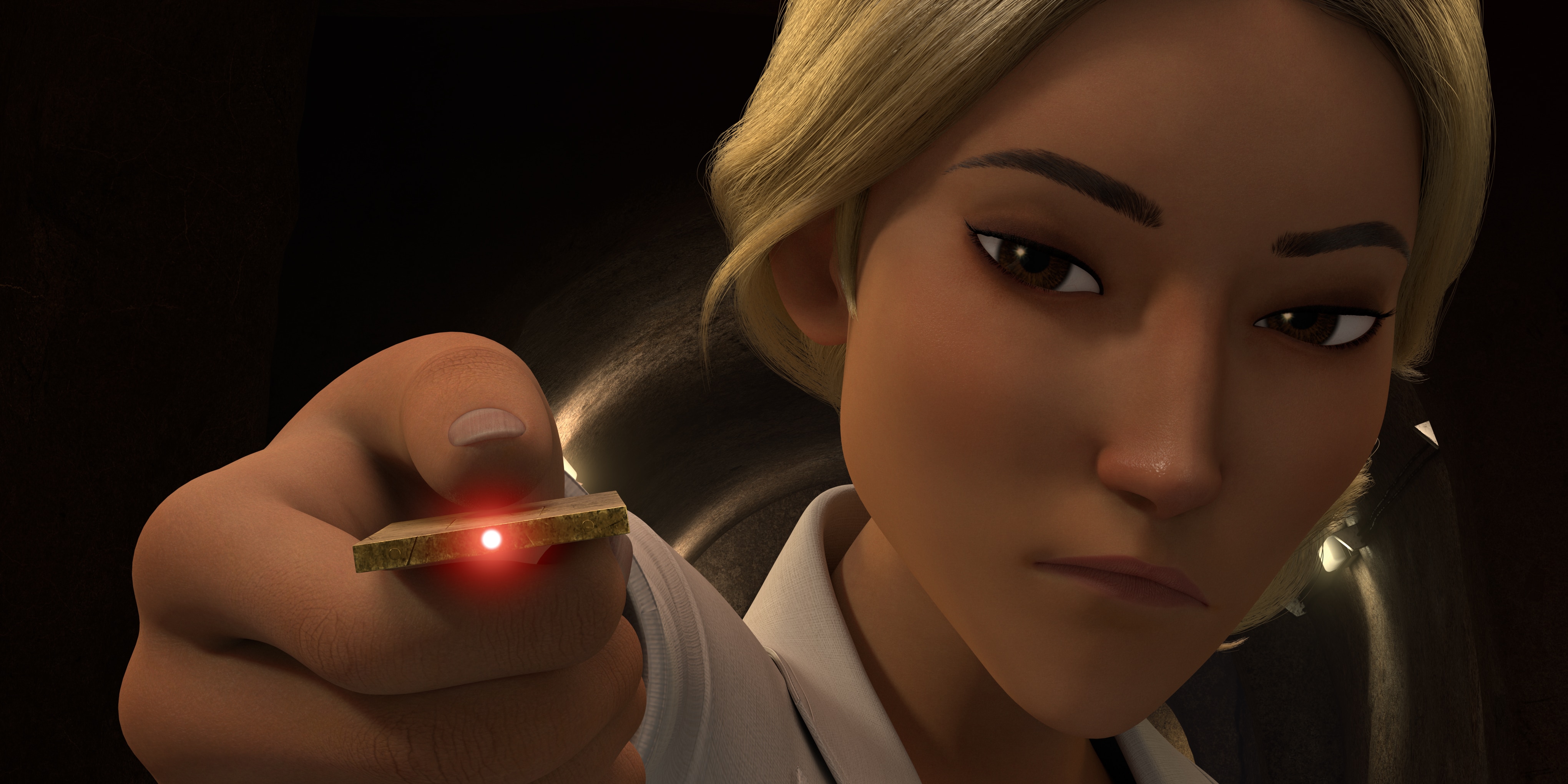
KAPLAN: There are several fan theories about how many Chaos Theory seasons we will get. So, what is the future of the show? Many stories were left open to take us into another season.
KREAMER: You never really know how it will play out, so I feel like this chapter’s ending does close itself. However, if we have more runway, it feels like everything is heading towards Biosyn Valley, where the third act of Dominion takes place. If we get to do more, that’s where I’d look. We’ll just have to see how things play out.
KAPLAN: I was excited that the show’s disability consultants were back.
KREAMER: Yes.
KAPLAN: Can you tell me what it’s like working with disability consultants, and why it’s so important to have people like that on set or in the production team?
KREAMER: It’s like anything else; you want to tell the story correctly, and there’s so little disability shown in the media. So when we’ve got this platform, we want to tell the most authentic story we can. We’ve been working with RespectAbility and have hired Peter Lee, who started as one of our consultants. He’s also a dynamite writer, so he was in the writer’s room. Even when Peter was not in the writer’s room, we sent him every animatic, like the rough animation that the board artists do, because we wanted to tell it authentically.
It’s the same with Kiersten Kelly, who voices Brooklynn, who also has a limb difference. So, you know, we’re trying to tell an entertaining story, but we’re also trying to tell it as accurately and respectfully as we can. That’s not my life experience, so I wanted to talk to people with that life experience so we can get it right.
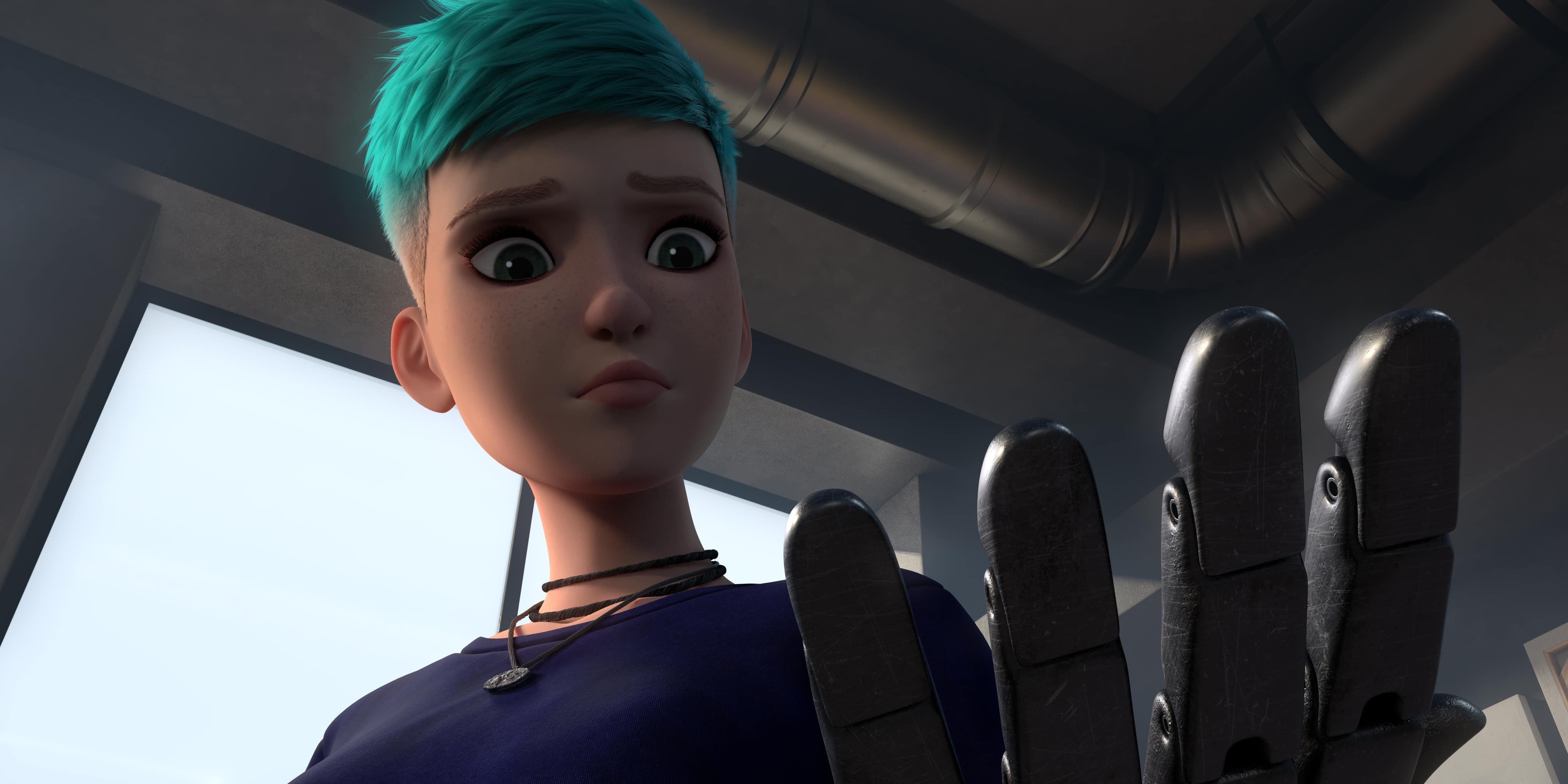
KAPLAN: I appreciated it because I am disabled, although it’s different for me since I don’t have a limb difference. However, I liked how, at the end, Brooklynn said about her prosthetic, “I don’t need this. This doesn’t make me whole.”
KREAMER: That comes from a story Peter told about how he felt at one point that he was wearing his prosthesis for others and not himself, which struck me. So, I always liked the idea of Brooklynn taking off the prosthesis given to her by a bad person, which she was wearing on her terms. So, I felt it was always very important for Brooklynn to be like, “I’m here for me, and I don’t need this. I’m a whole person.” You know, that’s always sort of the message of our show: people are people, and no matter what they look like, who they love, what the color of their skin is, or how they worship. That’s sort of what’s most essential for us to show.
KAPLAN: Why do you think this type of onscreen representation is essential to viewers?
KREAMER: Well, to me, it’s just normalizing everything. Like I said, people are people. It doesn’t matter how many limbs you have, or whatever your differences are. We all have differences, so just because you have differences doesn’t make you less than someone else. It doesn’t make you less whole. You’re a person. So I think the more people can be seen, the more kids with a disability who can see Brooklynn as a main character, to me, that’s just so important.
It’s like so many people, especially kids, are out there and don’t feel seen and don’t feel normal. We’re just here to say, “Yes, you are.” That was one of the most exciting parts when we kind of landed on the idea of Brooklynn gaining a disability. Like, we took this kick-ass character, and then she has this traumatic injury and has a limb difference, and she came out of it as a kick-ass character. It informs the character but doesn’t define the character, and I’m just happy we got the opportunity to tell this story.
KAPLAN: Yeah, I think the show’s really unique in that. I love it.
KREAMER: I appreciate that.
KAPLAN: Yeah, because, often, disabled characters have to be fixed.
KREAMER: 100%, they have to be fixed, or they’re suddenly the wisest people there and have all the answers. Although Brooklynn has made some morally questionable decisions throughout this, it’s not because of her limb difference. It’s not because of her disability. She was doing that long before that ever happened. So, we didn’t want her to be the brave hero overcoming adversity suddenly, you know? It’s like, she’s a person, she’s got flaws, and she’s just like everybody else. I guess that’s my point.
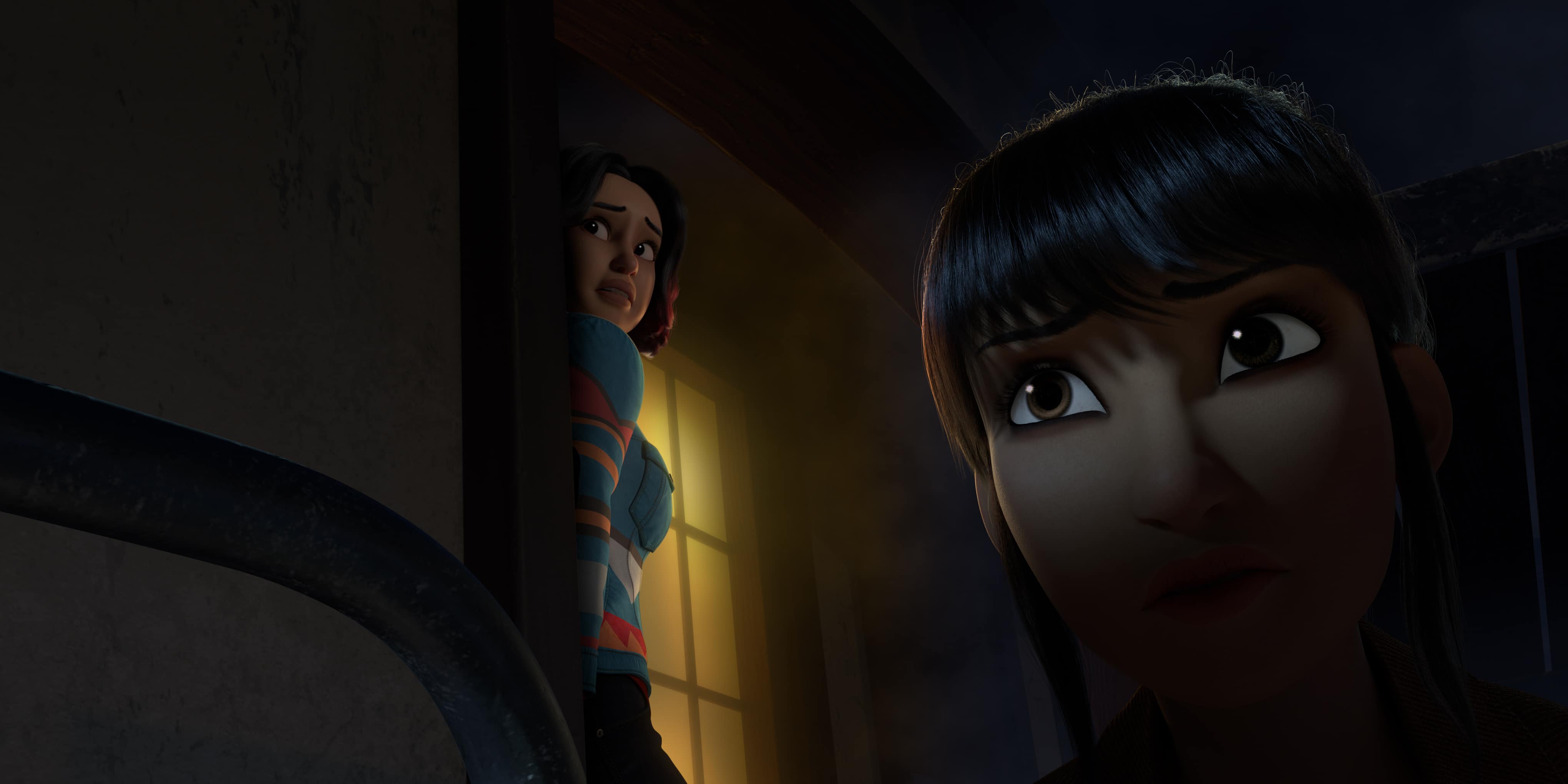
KAPLAN: The show is so diverse, which is excellent. So, I want to talk a bit about Yaz and Sammy.
KREAMER: Yeah… Look, even though there are dinosaurs alive, we’re trying to tell the most grounded, realistic story possible. When you look at where Yaz and Sammy came from as teenagers on Isla Nublar, fighting for their lives daily, you know that it impacts a relationship. How many of us are still with the person we were with at 15, and we weren’t being chased by dinosaurs? Then, in Season 1, we hinted that there’s trouble in paradise—people grow and get older, and they didn’t deal with those issues. They got set aside, you know? We try not to be one of those cartoons where everything’s back to normal.
As painful as it was, and I’m speaking on behalf of the whole crew and the writers’ room, these characters are like our kids, and you want your kids to be happy. So, those records with Kausar Mohammed and Raini Rodriguez were painful. It was very emotional, but it felt like with Brooklynn coming back and then choosing not to go with the kids, that would have significant ramifications for all these characters and their relationships, and it felt like that might be the straw that breaks the camel’s back.
KAPLAN: I noticed they never really talked about how Yaz went to treatment. They say, “Oh, she went someplace,” you know?
KREAMER: Right. Exactly. They do briefly, but exactly. You know, you could do an entire show of any of these characters, and we have a lot of plates to keep spinning. So, I’d love to go into more detail on Brooklynn’s journey, or Kenji’s. All these kids are dealing with some kind of trauma in their own way, as so many of us are, and so you just try to support it and acknowledge it in as grounded and realistic a way as you can.
KAPLAN: I know last season was all about the trauma, so how do you feel this season continued on that theme? Or, what themes do you hope people take from this season?
KREAMER: Well, look, we don’t reinvent the show every season, but we shift tone and theme. And while supporting all these characters going through what they’re going through, this is also sort of our blockbuster season, where we took some big swings on set pieces and things like that. However, at the core of these shows, it comes down to the characters, so baked into the whole concept for this series was capturing that vibe of—whether it’s right after high school and before college or after your first year of college—when you’re trying to figure out who you are, what you stand for, and what your identity is. And there’s a lot of uncertainty, especially when you’ve had as much stuff thrown at you as we’ve thrown at all these kids.
At the heart of Camp Cretaceous and this show, the theme has always been that we’re stronger when we stick together. Unfortunately, that doesn’t always happen. So everyone is just doing their best and trying to make the best decisions, given the information they have. But just like in real life, it isn’t always that easy.

KAPLAN: What was it like working with all the actors and writers?
KREAMER: Oh, it’s great. Our head writer, Bethany Armstrong Johnson, started as a writer’s assistant at the beginning of Camp Cretaceous and then quickly rose to staff writer. She’s just the best and is now leading this writer’s room of really smart, good-hearted, talented people.
I’ve watched most of these actors grow up. Paul-Mikél Williams, who plays Darius, was 12 years old when he started Camp Cretaceous. He turned 19 a week ago and is now taller than I am. All these actors, as well as the new ones, like Kiersten and Darren Barnet, are just great people. I’m in awe of everybody’s talent, not just the writers and actors, but also this entire crew. You can feel everybody’s heart and soul that they put into their jobs, and everyone takes it seriously and understands this is a big responsibility that we all have. So, yeah, this show has just been the experience of a lifetime, and I’m just very grateful to be part of the team.
KAPLAN: Awesome. Thank you so much. That was wonderful.
The new season of Jurassic World: Chaos Theory is now available to stream on Netflix.
